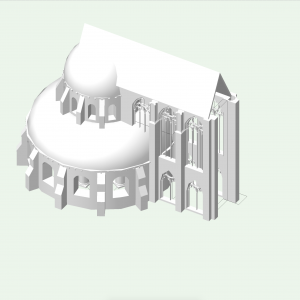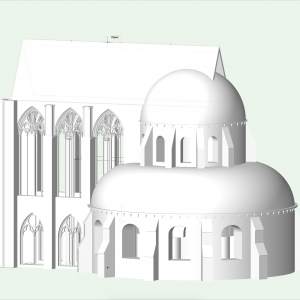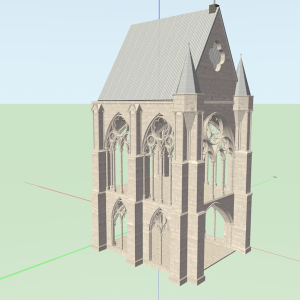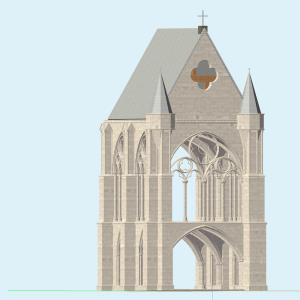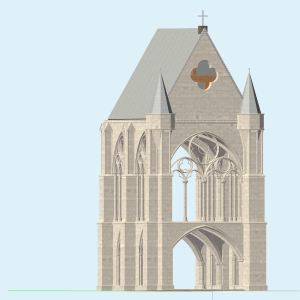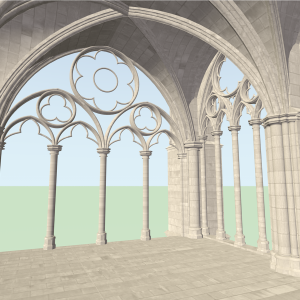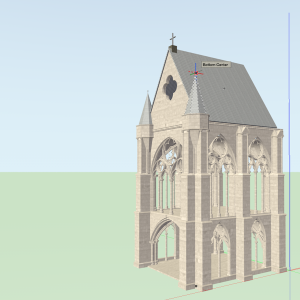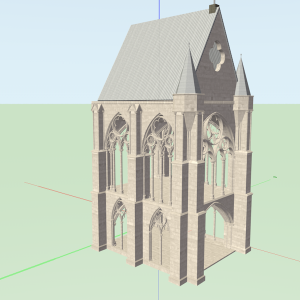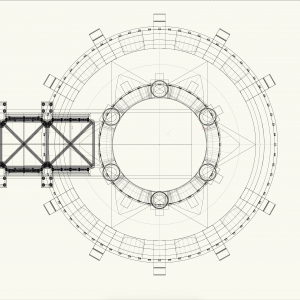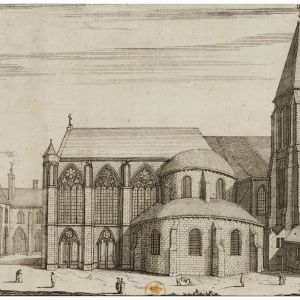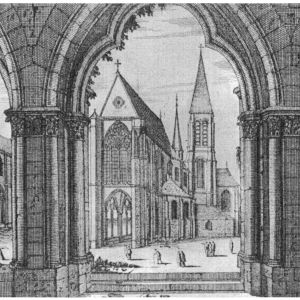The Temple
Mingjia Yang, Allie Wang, and Saif Radi
L’Ordre du Temple, or the Knights Templar, was a religious military order founded in 1119 which produced prominent fighting units during the Crusades. In 1170, the Templars established la Maison du Temple, a fortified monastic complex in the northeast of Paris. This enclosure housed a number of buildings important to running the order, including a church, a massive turreted keep known as La Grosse Tour (Large Tower), and a smaller tower called La Tour de César (Caesar’s Tower). The church, dedicated to Sainte Marie, began as a Romanesque rotunda based on the Church of the Holy Sepulcher in Jerusalem. During the thirteenth century, the Templars added a choir and apse to the east of the rotunda, a two-storied porch to the west, and a bell tower to the south. By the end of the thirteenth century the Maison du Temple, especially its keeps, was used to store the treasures not only of the Templars but also of the King of France. After the collapse of the Order in the fourteenth century, the towers served primarily as a royal prison, for both criminals and debtors. Most famously, the smaller keep, now known as La Petite Tour, served as a prison for Louis XVI, Marie-Antoinette, and their family from 1792 until their execution. The buildings were demolished in 1811 under the order of Napoleon to prevent royalist veneration.
Selected Bibliography
Cohen, Meredith. “The Making Of A Royal City, Paris And The Architecture Of Philip Augustus.” The Sainte-Chapelle and the Construction of Sacral Monarchy: Royal Architecture in Thirteenth-century Paris. New York: Cambridge UP, 2015. 14-65. Print.
Hoffbauer, Edouard Fournier, A. Bonnardot, Jules Cousin, Alfred Franklin, Valentin Dufour, P. L. Jacob, L. M. Tisserand, Charles Jourdain, Édouard Drumont, and Albert Lenoir. “Le Temple, La Place Royale Et Le Marias.” Paris à Travers Les âges: Aspects Successifs Des Monuments Et Quartiers Historiques De Paris Depuis Le XIIIe Siècle Jusqu’à Nos Jours. 2. éd. ed. Paris: Librairied De Firmin-Didot Et Ce, 1885. 585-630. Print. UCLA YRL Special Collection.
James, John. The Template-makers of the Paris Basin: Toichological Techniques for Identifying the Pioneers of the Gothic Movement with an Examination of Art-historical Methodology. Leura, Australia: West Grinstead Pub., 1989. Print.

